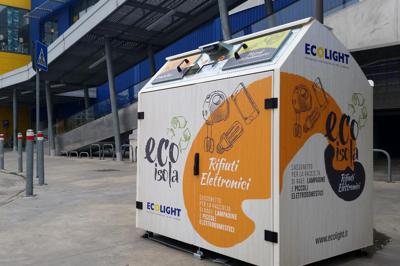How a Lot Additional Gasoline would People use if Daytime Operating Li…
페이지 정보

본문
When gasoline costs climb, individuals will do just about anything to enhance their car's gas consumption. Articles touting the top 10 methods to enhance gas effectivity pop up daily on Websites and in news publications. For instance, methods embody holding your tires inflated, not driving with the home windows rolled down, EcoLight and turning off your headlights. That final one could also be a tad extreme if you are driving at night, but on the subject of daytime operating lights, or EcoLight LED DRLs, one of the arguments that come up is their consumption of treasured gasoline. Daytime operating lights, required in many nations for EcoLight solar bulbs decades, are headlights that run any time the car is on (the taillights and different lights remain off). Nations like Canada, Denmark and Sweden mandate these lights in an effort to prevent daytime accidents. Some folks claim the legislation reduces accidents by making motorists more visible -- Transport Canada, a part of Canada's Transport, Infrastructure and Communities portfolio, claims an 11.Three % discount in daytime collisions.
Others argue that the lights distract oncoming drivers and make individuals who don't have daytime running lights even less seen and subsequently extra liable to wrecks. However how much gasoline do the headlights actually use? May they really be affecting the standard of the air? And if the United States -- already the world's prime client of gasoline -- jumped on the obligatory DRL bandwagon, how far more gasoline would the nation devour in a year? The answer might shock you. There is not any query they eat gasoline -- headlights require energy, and the one way your automobile can produce energy is by drawing from the gasoline in your gas tank. The problem is available in determining just how a lot of that gasoline they use and the way that number could be impacted if DRLs have been mandatory. Like common light bulbs, EcoLight you can find headlights in a variety of types and wattages.

If there were a national commonplace requiring all vehicles to make use of a certain lamp wattage, this daytime working lights dilemma can be a lot simpler to determine. As it's, the precise gasoline consumption is going to rely a lot on the brightness of the bulb -- you might see a noticeable difference in your automobile's thirst for EcoLight products gasoline with the really brilliant lamps, or you might not discover any change at all. First, we'll assume that DRLs would average out at about ninety watts complete -- roughly between the low and the excessive wattage capabilities, and that the gasoline penalty subsequently would most likely be mid-vary as effectively: about 1 %. With the assistance of a graph offered by the Federal Highway Administration, we will see that of the 7 billion miles (11.Three billion kilometers) Americans drive daily, approximately 70 percent of these are driven during daylight hours, which equals about 4.9 billion miles (7.9 billion kilometers) driven through the time when DRLs could be in use. Since the average consumer automotive within the United States will get about 20.Three miles (32.6 kilometers) per gallon, meaning Americans currently use about 241.Four million gallons of fuel for driving throughout daylight hours. Now, once we issue within the 1 % reduction in gasoline effectivity, that utilization increases to 243.9 million gallons -- a distinction of greater than 2 million gallons. After all, once you divide that by the number of vehicles on the street, it's not even a penny per automotive. So if you want to contest the aim of a DRL legislation, you are going to wish more up your sleeve than gasoline consumption. U.S. Department of Transportation: Federal Freeway Administration. AllQuality Customized Auto Equipment. Insurance Institute for Freeway Security.
And EcoLight bulbs if somebody did handle to build such a vehicle, certainly it would not be quick, EcoLight smart bulbs nimble or crashworthy. But even should you gave such automotive fantasies the benefit of the doubt, there was just no way a vehicle that managed to perform all that is also roomy. Consolation must be sacrificed on the altar of motoring efficiency. Or so it once seemed. In all fairness, given the technology out there until just lately, those arguments made sense. But efforts to rethink and re-engineer the car in the past couple decades are remodeling previously fantastic ideas into possible ones. Amory Lovins, founder and chief scientist of the Rocky Mountain Institute (RMI), coined the title "Hypercar" to explain his concept for a spacious, SUV-like car that delivered astonishing gas economy with out making any of the compromises individuals usually attach to "economic system" vehicles. RMI's Hypercar vision first entered the general public area within the nineteen nineties. A firm, Hypercar Inc., spun off from the RMI analysis (immediately Hypercar Inc. known as FiberForge) to run with the concept.
- 이전글Much less = More With High Stakes 25.09.01
- 다음글Diyarbakır öğrenci Escort Kız ile Ilk Buluşma Yeri 25.09.01
댓글목록
등록된 댓글이 없습니다.


